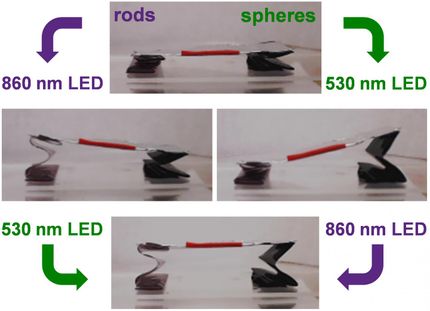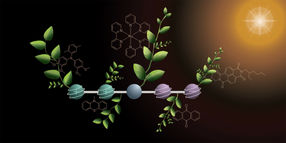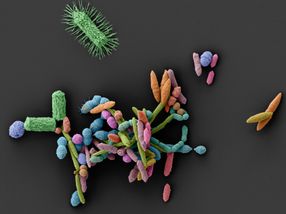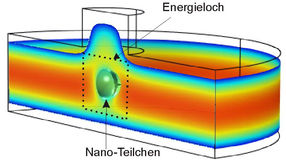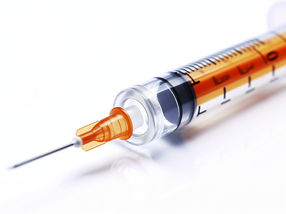Fingerprint instead of Blood Sample
Antibody tests on fingerprints to detect drugs and diseases
Advertisement
To this day, fingerprints are just the thing when a perpetrator needs to be arrested or a person needs to be identified. British scientists working with David A. Russell also want to make it possible to use fingerprints to reveal drug and doping transgressions and to diagnose diseases. As the team from the University of East Anglia in Norwich and King's College in London report in the journal Angewandte Chemie, they have now been able to use specific antibodies to differentiate between the fingerprints of smokers and nonsmokers.
A fingerprint is of no use to an investigator unless it can be matched to one in a database or can be directly compared with that of a suspect. Russell and his team expect that we will soon be able to gain information about the lifestyle of the person who made the fingerprints, which could shrink the pool of suspects. In this way, it should be possible to use fingerprints to detect drugs, medications, or food that have been consumed, and also to diagnose some diseases.
Researchers want to coax all of these secrets out of the tiny traces of perspiration that a fingerprint leaves on a surface. The research team demonstrated the ease with which this should be possible by differentiating between fingerprints made by smokers and nonsmokers. To avoid false results from chance contact with tobacco products, they designed their system to detect cotinine, a metabolite formed by the body after consumption of nicotine. The researchers wet the fingerprints with a solution containing gold nanoparticles to which cotinine-specific antibodies were attached. These bind to the cotinine. Subsequently, a second antibody, which was tagged with a fluorescent dye and binds specifically to cotinine antibodies, was applied to the fingerprint. Because there are many cotinine antibodies attached to each nanosphere, there is a significant amplification effect.
Indeed, the ridge patterns of smokers' fingerprints fluoresce, while those of nonsmokers do not. The fingerprints are very highly resolved and can be lifted for comparison with known prints, just as in conventional procedures. When magnified, even the tiny sweat pores along the ridges of the fingertip become visible, which can also be used to make an unambiguous assignment.
In addition to forensic applications, this method would be ideal for detecting doping. Sample manipulations by the test subjects would hardly be possible since each sample is uniquely assignable to a specific athlete by virtue of the ridge pattern. Medical diagnostics could also benefit in the form of simple and quick mass screening with no danger of sample mix-ups. Another application could be drug screening without taking blood samples-from suspicious drivers, for example.
Original publication: David A. Russell et al.; "'Intelligent' Fingerprinting: Simultaneous Identification of Drug Metabolites and Individuals with Antibody-Functionalized Nanoparticles"; Angewandte Chemie International Edition 2007, 46, No. 22, 4100-4103.
Most read news
Topics
Organizations
Other news from the department science

Get the chemical industry in your inbox
By submitting this form you agree that LUMITOS AG will send you the newsletter(s) selected above by email. Your data will not be passed on to third parties. Your data will be stored and processed in accordance with our data protection regulations. LUMITOS may contact you by email for the purpose of advertising or market and opinion surveys. You can revoke your consent at any time without giving reasons to LUMITOS AG, Ernst-Augustin-Str. 2, 12489 Berlin, Germany or by e-mail at revoke@lumitos.com with effect for the future. In addition, each email contains a link to unsubscribe from the corresponding newsletter.
Most read news
More news from our other portals
Last viewed contents
BOC to sell US packaged gases business
PPG Acquires Asian Maker of Specialty Wood Coatings
DataApex and Young Lin Instruments announce OEM cooperation
Polysilicon for the photovoltaic market in France - RAG Subsidiary Degussa and Silpro signed a letter of intent
PPG Completes Acquisition of Dyrup

Verband der Mineralfarbenindustrie e.V. - Frankfurt am Main, Germany
Degussa Expands Isophorone Production in North Rhine-Westphalia
Nobel Prize in Chemistry for 2009 for studies of the structure and function of the ribosome - The ribosome translates the DNA code into life
Borealis Fast-Tracks Innovation with University of Leoben
Sabo SpA announces that it has entered into an agreement with BASF

Mexichem S.A.B de C.V. - Tlalnepantla, Mexico




